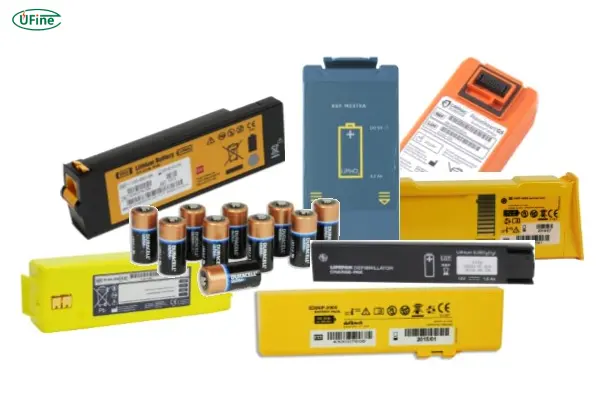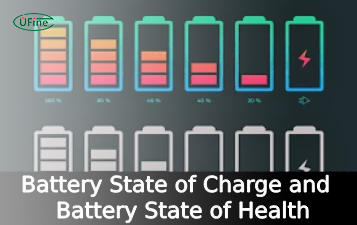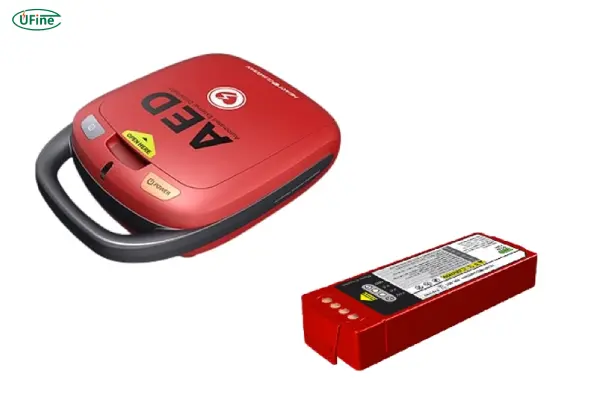
- Part 1. What is an AED battery?
- Part 2. What battery does an AED use?
- Part 3. Common specifications of AED batteries
- Part 4. How long does an AED battery last?
- Part 5. How much does an AED battery cost?
- Part 6. Can AED batteries be replaced?
- Part 7. When and how to replace an AED battery
- Part 8. Compatibility and AED battery models
- Part 9. What to do with a dead AED battery?
- Part 10. Final thoughts
- Part 11. FAQs
When someone collapses without warning, gasping or not breathing at all, every second counts. In those terrifying moments, an AED (Automated External Defibrillator) becomes a lifeline. But here’s the part most people overlook—the AED battery is what powers that lifesaving jolt. No battery, no shock. And no second chance.
This article dives deep into the heart of AEDs—the battery. We’ll walk you through what it is, how it works, how long it lasts, how much it costs, and why choosing the right one might save more than just money.
Part 1. What is an AED battery?
At its core, an AED battery is a specialized power source built to deliver high-voltage energy in an instant. It doesn’t just run the screen or play voice prompts—it delivers the life-saving shock. That’s why AED batteries are not your everyday AA or 9V cells. They’re medical-grade, long-life lithium batteries engineered to perform under pressure, with zero tolerance for failure.
Most AED batteries are designed to:
- Last for years in standby mode
- Perform regular self-tests
- Withstand temperature extremes
- Provide enough charge for multiple shocks
Think of them as silent guardians, waiting patiently—but ready in a heartbeat.
Part 2. What battery does an AED use?

AEDs don’t use a one-size-fits-all battery. Different brands and models require different power sources. Typically, they use:
- Non-rechargeable lithium batteries: Ideal for long-term standby in public or private AED units
- Rechargeable lithium-ion batteries: Used in emergency medical services or hospitals, where devices are used frequently
- Integrated battery and electrode packs: Like HeartSine’s Pad-Pak, combining pads and power into one replaceable unit
Here are a few examples:
BrandBattery TypeStandby LifePhilips HeartStartLithium manganese dioxide4–5 yearsZOLL AED Plus10 x Duracell 123 lithium5 yearsLIFEPAK CR PlusCHARGE-PAK (non-rechargeable)2 yearsHeartSine Samaritan PADIntegrated Pad-Pak3.5–4 years
Important note: You can’t use a Philips battery in a ZOLL AED, or vice versa. Compatibility is non-negotiable.
Part 3. Common specifications of AED batteries
Here’s where it gets technical—but don’t worry, we’ll break it down.
AED batteries are built for reliability, and their specs reflect that. When choosing or replacing one, look for the following:
- Voltage: Most AED batteries operate between 9V and 18V, but some models require more.
- Capacity: Usually rated in milliamp-hours (mAh) or number of shocks (e.g., 200 full-energy shocks).
- Shelf life: Often 4–7 years if stored properly and unopened.
- Standby life: Typically 4–5 years while installed in the device.
- Shock delivery capacity: Ranges from 100 to 400 shocks depending on battery type and model.
- Self-check support: Many batteries support daily, weekly, and monthly automatic diagnostic tests.
- Temperature tolerance: Must withstand extreme environments, usually from 0°C to 50°C (32°F to 122°F).
And don’t forget: Always use certified medical-grade batteries from trusted manufacturers or suppliers.
Part 4. How long does an AED battery last?
You might think: “If I never use the AED, the battery will last forever, right?” Unfortunately, that’s not the case.
An AED battery has three timelines to consider:
- Shelf Life: Time the battery can remain in storage (uninstalled) without degrading. Usually 4–7 years.
- Standby Life: How long the battery can sit inside the AED while performing self-tests. Around 4–5 years.
- Usage Life: After actual use (even one shock), most manufacturers recommend replacing the battery immediately.
Other factors can shorten battery life:
- Frequent self-testing routines
- Temperature extremes
- Poor storage conditions
- Fake or off-brand batteries
If your AED is used in a school, gym, or factory with changing environments, consider checking battery health every month.
Part 5. How much does an AED battery cost?
AED batteries are an investment—because lives are priceless.
- Non-rechargeable lithium batteries: $120 to $300
- Rechargeable battery packs: $250 to $400 (plus charger)
- Integrated pad/battery combos: $150 to $250
The cost depends on the brand, battery life, and whether it’s OEM (original equipment) or third-party.
While cheaper third-party options exist, make sure they’re FDA-certified or CE-approved. Otherwise, you’re gambling with safety.
Looking for a battery manufacturer that balances quality and customization?
Ufine Battery is a trusted name in the lithium battery industry, offering custom-designed lithium batteries for AEDs and other medical equipment. From high-rate discharge to extreme temperature performance, Ufine’s lithium polymer and cylindrical battery options are fully customizable for your device requirements. Contact us to get tailored solutions that match your AED battery needs.
Part 6. Can AED batteries be replaced?
Yes—and they must be.
AED batteries aren’t rechargeable (unless your model supports that). That means once it’s dead—or even near expiry—it needs replacement.
Why is this so critical?
Because a depleted battery could cause:
- Delayed device startup
- Failure to deliver shocks
- Legal consequences if you’re managing AEDs for public use
AED manufacturers usually make battery replacement user-friendly, often without needing tools.
Part 7. When and how to replace an AED battery
Here’s how you know it’s time:
- You hear beeping
- You see a flashing red light
- The status screen says “Battery Low” or “Replace Battery”
- You’ve recently used the AED
Step-by-step: How to Replace Your AED Battery
- Turn off the AED (if your model requires).
- Locate the battery compartment—usually marked and easy to find.
- Remove the old battery—some may have a release latch.
- Insert the new battery—firmly until it clicks.
- Run a self-test—some AEDs do this automatically.
Pro tip: Always keep a spare battery and pads. Emergencies don’t wait for delivery trucks.
Part 8. Compatibility and AED battery models
Not all AEDs are created equal—and neither are their batteries.
Different manufacturers create different battery shapes, voltages, and software compatibility. Even within the same brand, two AED models may require different batteries.
Here are a few examples:
- Philips HeartStart OnSite ≠ Philips FRx
- ZOLL AED Plus ≠ ZOLL AED Pro
- LIFEPAK CR Plus ≠ LIFEPAK 1000
Always double-check:
- Model number on your AED
- Battery serial number and part code
- Manufacturer’s specifications
Still unsure? Reach out to Ufine Battery to get professional help with custom battery compatibility, especially if you’re managing a large fleet of AEDs with varying needs.
Part 9. What to do with a dead AED battery?
A dead AED battery isn’t just trash. It contains lithium and other materials that can be hazardous if mishandled.
Here’s what to do:
- ✅ Drop it off at a battery recycling facility
- ✅ Return it to your AED manufacturer if they offer disposal programs
- ✅ Contact local hazardous waste disposal services
- ❌ Never toss it into the general waste bin
- ❌ Don’t incinerate, crush, or expose to water
Proper disposal is essential—not just for the environment, but for safety.
Part 10. Final thoughts
When someone’s life hangs by a thread, the reliability of your AED battery can change everything. It’s not just another accessory—it’s the beating heart of the entire device.
So take a moment to check your battery. Replace it before it’s too late. And if you’re sourcing batteries for a facility, organization, or OEM AED manufacturer, don’t settle for generic options.
Partner with a trusted name like Ufine Battery—a leader in custom lithium battery manufacturing in China. Whether you need ultra-thin, high-discharge, or temperature-resistant cells, Ufine provides safe, certified, and performance-driven battery solutions for lifesaving devices.
Part 11. FAQs
Can I use household batteries in an AED?
Absolutely not. AEDs require medical-grade lithium power sources.
How do I test the battery health?
Most AEDs do automatic self-checks, but you can also check battery level indicators manually.
Can I travel with AED batteries?
Yes, but follow airline lithium battery transport guidelines.
What’s the shelf life of an unused AED battery?
Typically 5 to 7 years, depending on the manufacturer.
Are third-party AED batteries safe?
Some are, if certified. But always buy from a reputable supplier.
How many shocks can an AED battery deliver?
Usually 100 to 400 shocks, depending on the model and charge.
Should I unplug the battery during storage?
No. AEDs need to stay ready and perform self-checks, which require a connected battery.
Is there a universal AED battery?
No. Each AED model has its own battery requirements.
Do weather conditions affect AED battery life?
Yes. High heat or freezing temperatures can shorten lifespan.
Where can I buy custom AED batteries?
Try Ufine Battery. They offer custom lithium battery packs to meet your voltage, capacity, and performance needs.
Related Tags:
More Articles

Battery State of Charge and Battery State of Health
Battery SoC vs. SoH explained: Learn professional methods to measure charge levels, test health status, and optimize battery performance for longer lifespan.
Difference Between 18650, 26650, and 21700 Batteries
What’s the difference between 18650, 21700, and 26650 batteries? Compare size, capacity, and performance to find the best lithium battery for your device.
LFP Battery Vs. LTO Battery: A Detailed Comparison
Compare LFP (LiFePO4) and LTO (Lithium Titanate) batteries by energy density, lifespan, safety, cost, and uses in EVs, solar storage, and backup power.
Compare 18650 battery types: Li-ion, LiFePO4, and LiPo. Key specs (voltage/capacity) and best uses for vapes, flashlights, EV batteries.
How to Distinguish Between Grade A, Grade B, and Grade C LiFePO4 cells?
Explore the differences between Grade A, B, and C LiFePO4 cells and learn how to choose the right one for electric vehicles, solar storage, or backup power.



